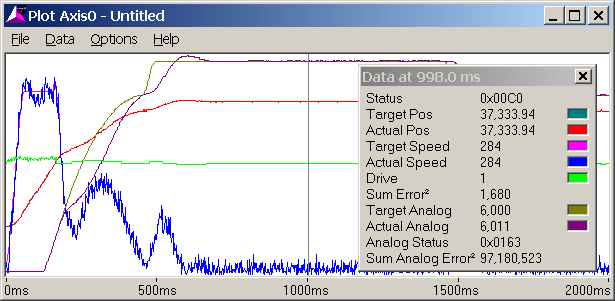
This is part 4 of the complete step-by-step example of setting up and tuning a position/pressure axis.
Part 4: Tuning Pressure
The pressure is tuned with the following steps:
Set the Proportional Gain on the pressure axis (Aux 2) to a small value, such as 2. Set all other Aux 2 gains and feed forwards to 0 and issue a P command.
Run the event sequence # 1. This will make a move that goes into pressure control and then ramps between pressures. The plot looks like this:

Note how the pressure (yellow) begins increasing and when it reaches 1000, pressure regulation begins. The white line is the target pressure.
Note the large undershoot as pressure regulation begins.
Once the axis is in pressure control, type 'y' in the Axis 0 command field. This will start a plot. Press the Insert key to view the plot:
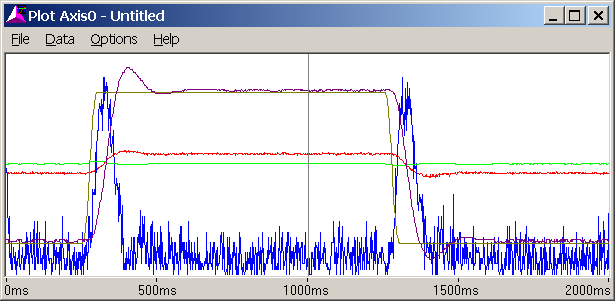
The plot shows the pressure ramping up and down. The actual pressure lags the target pressure and does not reach the target pressure during the constant pressure portions of the plot.
In this discussion, the Sum Error Squared has been left out because the visual inspection will be enough. However, keep in mind that the Sum Error Squared is a powerful aid for pressure also, and can be used if you wish.
To change the gains now, simply enter the gain, issue a "P" command, and start a plot. There is no need to run event step 1, because the pressure is ramping up and down endlessly. The gain will take affect as soon as the "P" command is issued. To view the plot, type 'y' in the command field to start the plot, and press the Insert key to view the plot.
After increasing the Proportional Gain to 4, it looks like this:
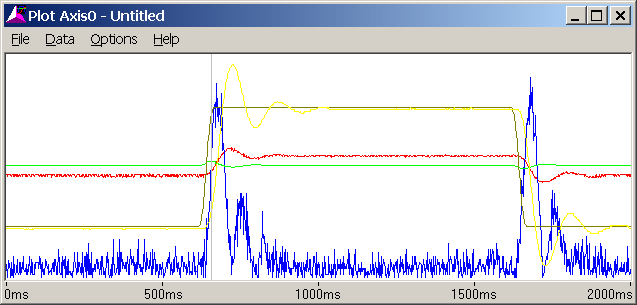
Note how it responds faster, but has some oscillation.
The next step is to adjust the Integral Gain. Setting it to 15 results in this:
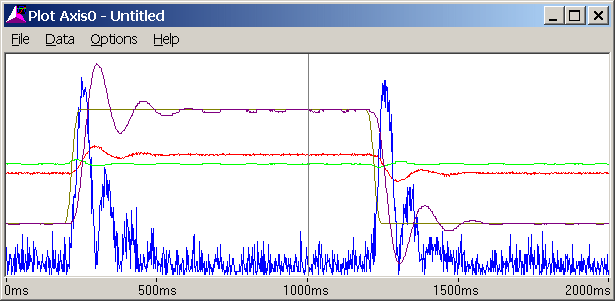
Even though adding integral gain caused the oscillation to worsened a little, it is still necessary. The next step will fix the oscillation.
The next step is to adjust the Differential Gain. Gradually increasing it to 250 results in this:
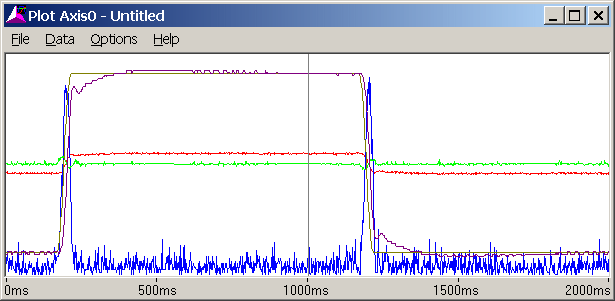
It removed the oscillations.
Now that the Differential Gain has been added, the Proportional Gain can be further increased. After trying several values, 8 seems the best for tightest control and least oscillation:

Notice that the pressure reaches the command pressure faster.
Note that there is a small amount of overshoot, but that is because the pressure is ramping so quickly. In normal operation the pressure would have to ramp slower for no overshoot.
This example is continued in the next topic.
Copyright (c) 1997-2015 by Delta Computer Systems, Inc.